Avocado trees (Persea americana) are notorious for being susceptible to cold. So what’s an avocado lover who gardens in a cooler area to do?
Don’t give up hope! The good news is that there are some cold-hardy cultivars available.
Of the three subspecies (more on this later) of avocado, the least commonly grown one – the Mexican variety – has a number of cultivars that can tolerate frosts.
Some even down to 15°F.
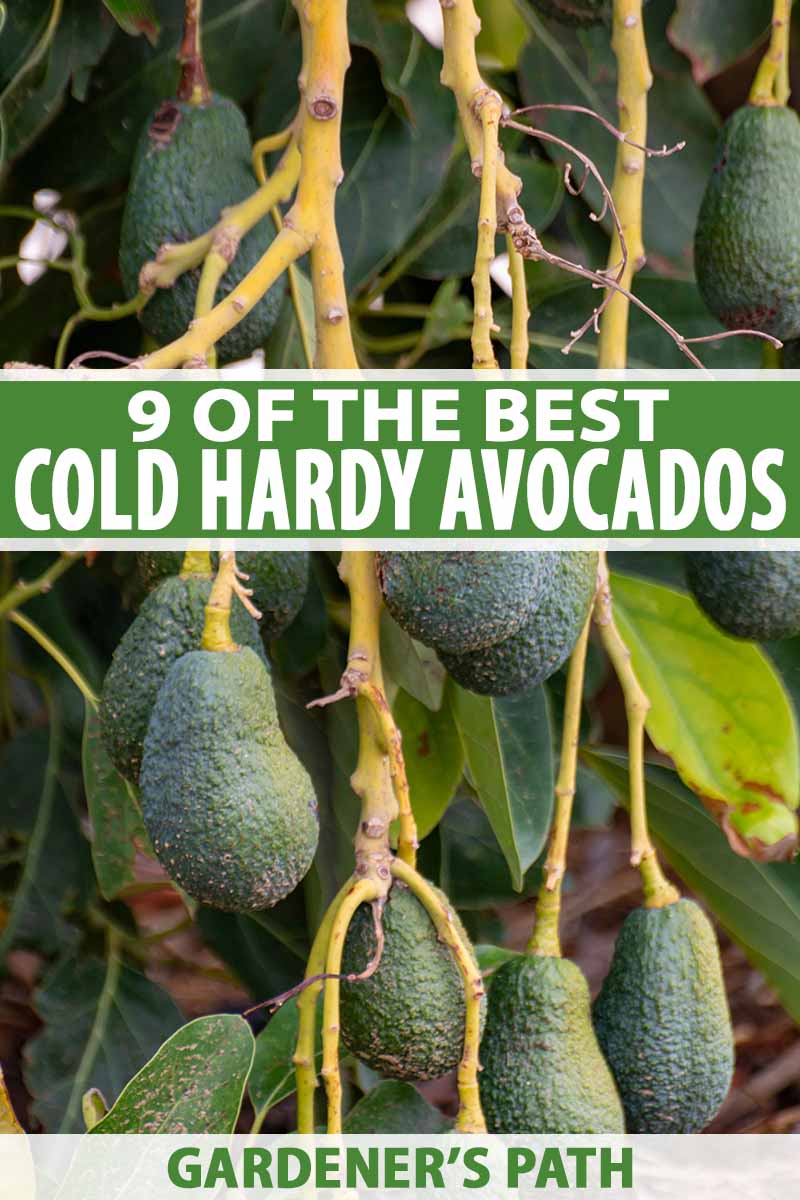
We link to vendors to help you find relevant products. If you buy from one of our links, we may earn a commission.
It’s worth noting that since avocados are tropical trees, we are still talking about fairly warm parts of the country. The lowest area of hardiness where you can grow avocados is Zone 8.
If you live in Zone 7 or below, you would need a large greenhouse to successfully grow an avocado tree.
What You’ll Learn
Having conducted lab research on avocado trees for 14 years, I am often asked what varieties will grow in colder areas, and I am delighted to provide this guide to answer that question.
A Quick Avocado Primer
Avocado trees fall into one of three possible subspecies: West Indian, Guatemalan, or Mexican.
Subspecies are a broader classification than varieties or cultivars. They encompass plants (or animals) that have developed in response to their natural environment in isolation from other populations of the species.

Of the three, the West Indian type is the least tolerant to cooler climates, and the Mexican – and some Mexican hybrids – are the most cold hardy.
Let’s look at the avocados you are probably most familiar with first: Hass avocados. These are the ones that turn black when they are ripe, and are the most popular variety for making guacamole during the Super Bowl.
They are from the Guatemalan group.
Hass is the most commonly consumed avocado on the US mainland.

However, this type does not like the cold. They can tolerate temperatures down to about 25°F, but they won’t be happy. They will drop their flowers, and more dramatically, their leaves.
Limbs can be damaged too, but such damage will not become apparent for several months.
In southern Florida, avocados of the West Indian subspecies are grown.
These have smooth, green fruit and are quite different from the Hass variety. Because they contain less oil, some people don’t find them as tasty.
West Indian avocados are sometimes marketed as “slimcados.” One advantage of this particular fruit is that with its lower oil content, it holds its shape better when sliced. This makes it popular for use in salads or tacos.
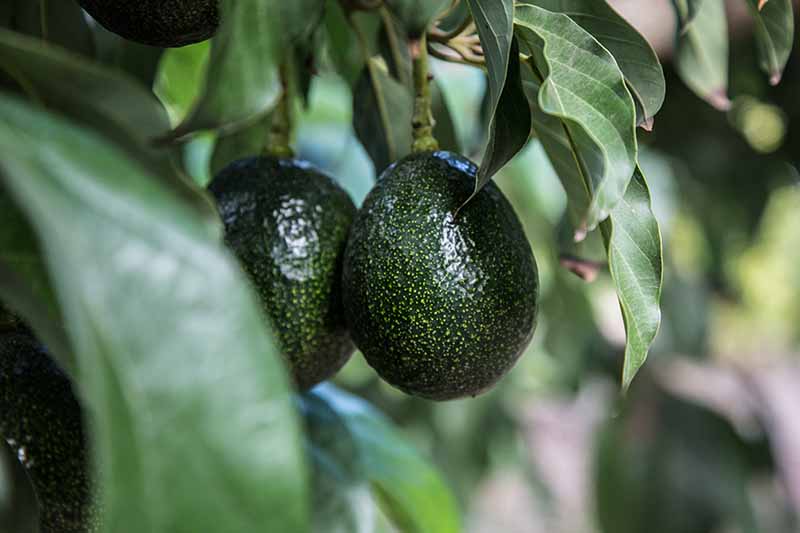
The West Indian varieties are the most cold-sensitive and can suffer severe damage at temperatures under 30°F.
Avocados from the Mexican group are primarily grown in home gardens in the US – not commercially. Many of them are quite tasty and have the added benefit of being cold tolerant.
These are not well suited to commercial production. The fruits are thin skinned and are easily damaged. They have a very short period of ripeness, and they don’t hang on the tree for very long. You need to eat them as soon as they are ready.
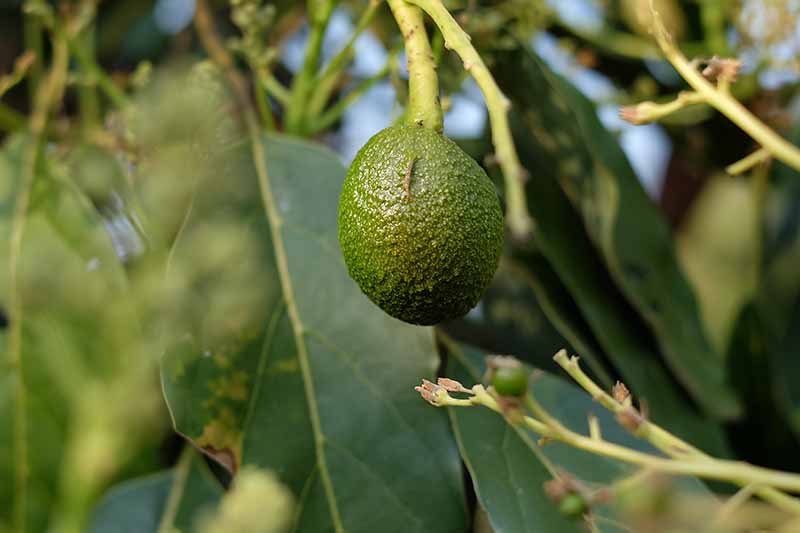
However, if winter temperatures in your area often dip to 20°F or below, and you want to grow delicious avocados, your best option is a cultivar from the pure Mexican subspecies.
Can You Grow Avocados From Seed?
Yep, you sure can. The old tooth pick trick has fascinated kids for years. But you probably won’t get a tree that produces very good fruit. All of the ones that are in commercial production and most backyard examples are from grafted stock.
Pure Mexican Cultivars
The fruit from these varieties that originate in the northern Mexican highlands are smaller than most of the commercial ones we’re familiar with. But with their high oil content, they taste exceptionally good. Even their thin, smooth skins are edible.
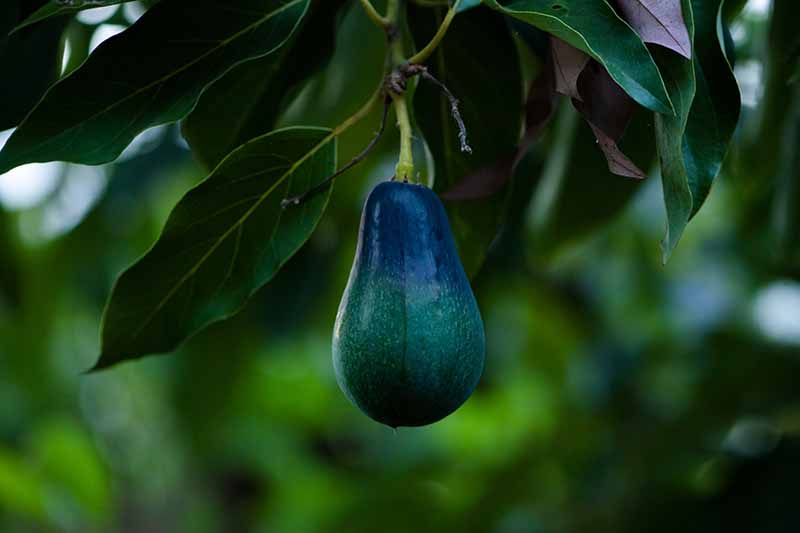
The leaves typically smell like licorice or anise when crushed.
Most varieties of this group can handle cold snaps down to around 18°F.
Let’s start with the stars – the exceptionally cold tolerant varieties that can produce fruit in parts of Zone 8.
1. Del Rio (Pryor)
This cultivar appears to be the most cold tolerant – and the most fabulous tasting – type of the Mexican subspecies.

While these fruits are small, weighing only 3-4 ounces, they are reputed to have the richest flavor and highest oil content of all the Mexican types.
According to avocado aficionado Craig Hepworth, the Florida Fruit Geek, these trees can handle temperatures down to about 15°F and still produce fruit the next season.
The original tree is in Del Rio, Texas. It’s been reported that this tree was frozen back to the major limbs when 7°F temperatures hit in the 1980s. However, it re-sprouted and grew back into a fruiting tree.
‘Del Rio’ was trademarked as ‘Pryor’ by cold-hardy avocado specialist Bill Schneider, who owns Devine Avocados in Texas.
This variety is sometimes sold as ‘Fantastic,’ but it is not always the same cultivar.
2. Mexicola Grande
With thin, glossy black skin, the fruit from the ‘Mexicola Grande’ variety is easy to peel, with a delicate flavor.

A fast growing evergreen, these trees can grow up to thirty feet tall. One of the hardiest of all the cultivars, trees are reported to tolerate temperatures into the low 20s.
You can find a grafted ‘Mexicola Grande’ tree of one to two-feet-tall from Brighter Blooms via Amazon.
3. Opal (Lila)
The ‘Opal’ variety originates in Texas. It produces medium-sized green fruits with a creamy flavor that are slightly larger than most of the Mexican types.
The name ‘Lila’ came from a large commercial nursery that propagated this variety and renamed it.
4. Wilma (Brazos Belle)
Trees of this cultivar are vigorous growers.
However, the large black fruit are unusually susceptible to the fungal infection anthracnose (a fungus that turns the skin orange), so they are better suited to drier climates where there is less humidity.
‘Wilma’ originated in Texas, from cuttings taken from a large tree growing in a backyard in Pearsall. Bill Schneider, owner of Devine Avocados took cuttings from this tree and promised to name the cultivar after the owner, Wilma Lechler.
Brazos Citrus Nursery in Texas produced a genetic clone of ‘Wilma’ and later changed the name to their own trademark ‘Brazos Belle.’
Mexican Hybrids
These avocado trees are crosses of the Mexican with either the Guatemalan or West Indian subspecies.
They are more cold tolerant than the standard commercial varieties but are not well suited to very cold areas. These hybrids are best grown in Zone 9 or higher.
5. Bacon
According to Gary Bender, farm advisor in subtropical agriculture at the University of California Cooperative Extension, the seemingly oddly named ‘Bacon’ is the most frost tolerant of the popular hybrids.
‘Bacon’ produces medium-sized, oval fruits with a large seed and shiny green skin – and a buttery, creamy texture. No, it doesn’t taste anything like bacon, it is named after James Bacon from California, who first cultivated it in 1954.
These trees can tolerate 24-26°F temperatures for periods of four hours at a stretch.
A 2 to 3-foot-tall ‘Bacon’ tree is available from Nature Hills.
6. Brogden
Sometimes spelled ‘Brogdon,’ thanks to their thin-skinned, purple, oval- to pear-shaped fruits with buttery yellow flesh, this is a popular variety.
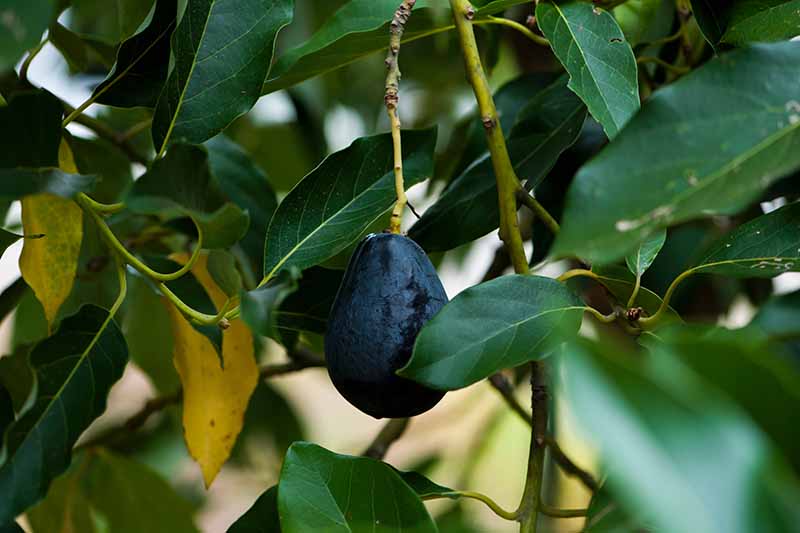
The medium-sized fruit can weigh between 14 and 24 ounces each.
These trees can tolerate a hard freeze, but they are not as tolerant of long periods of cold temperatures as the pure Mexican varieties.
7. Fuerte
A hybrid cross of the Mexican and Guatemalan subspecies, ‘Fuerte’ was the industry-standard avocado in California before the Hass came on the scene.
First propagated in 1911 in a California nursery, it got its name – Spanish for “strong” – after a particularly hard frost hit the area in 1913.
Many grafted avocado trees died, but specimens of this particular tree were undamaged. The pear-shaped fruits have green skins and pale, dense flesh and range from 6-12 ounces each. A moderate oil content gives them a rich, creamy flavor.
8. May
The medium-sized, 4 to 5-ounce, black-skinned fruit of this cultivar ripens early. This cultivar is flavorful, with a creamy texture.
9. Winter Mexican
This cultivar exhibits both cold and heat tolerance.
The large, tender-skinned, green fruit has a 30 percent oil content, giving the firm flesh a rich and creamy texture. Cold tolerant to 22°F, this tree can grow to over 40 feet tall in the right conditions.
Care Tips for Cold-Hardy Varieties
It’s important to remember that the cold tolerance of each of these varieties refers to the mature tree. Young trees will need additional protection to survive cold snaps.
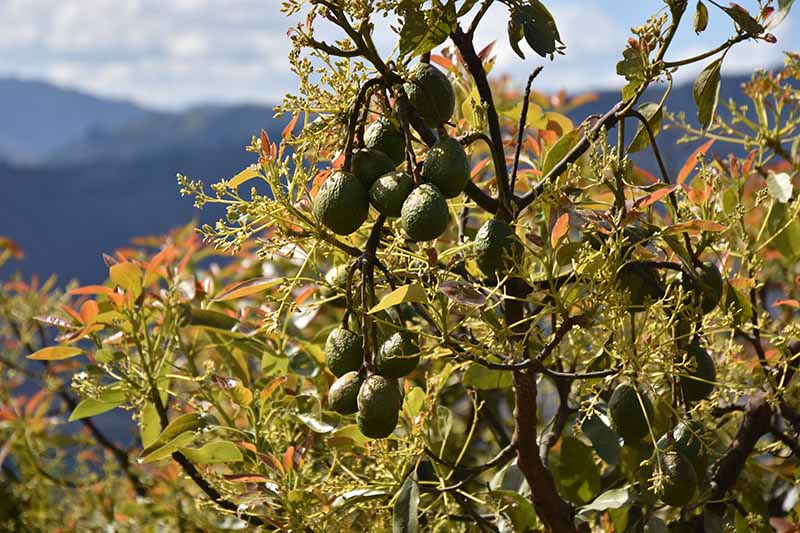
The cold-hardy varieties can grow in partial shade, but they prefer full sun. These trees require well-draining soil that does not get waterlogged, so try to find a site on higher ground or on a slight incline for planting. They will not tolerate flooding, which can kill the trees.
To plant your tree, prepare a hole approximately twice the width and depth of the root ball.
After planting, water in well, and fill in the soil as you water. Mulch around the base of the tree, keeping the mulching material 1-2 inches away from the stem.
These trees do not need to be trained, and they may not need to be watered in the rainy months. However, you’ll want to irrigate during dry spells in the winter.
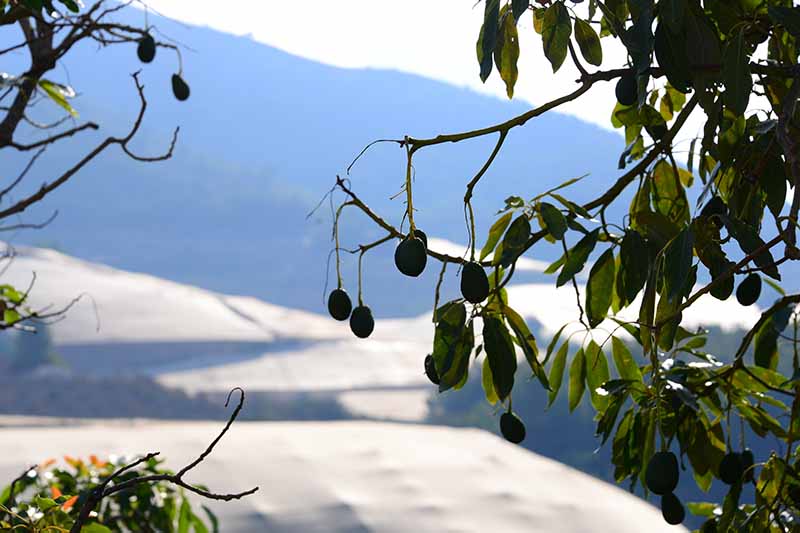
Even if you have a frost tolerant tree, you should take steps to keep it warm on very cold nights.
This is particularly true for young trees, which tend to be less tolerant of cold temperatures than mature ones. Placing a light blanket over the top can help protect against light frosts.
According to Monte Nesbitt, Larry Stein, and Jim Kamas, extension fruit specialists at the Texas A&M Agrilife Extension, putting a heat source underneath the cover can help to save the leaves. They suggest using decorative lights or a camp lantern. Just remember not to use an LED light source, as these do not emit any heat.
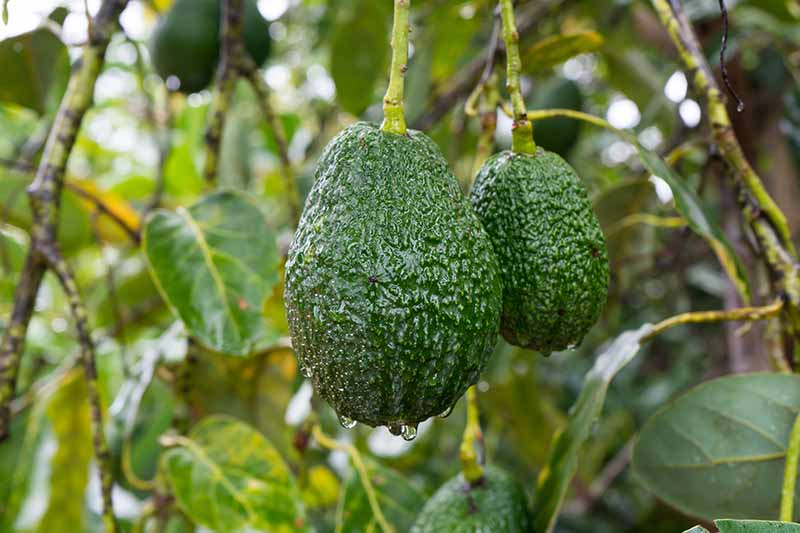
While it may seem counterintuitive, continuously spraying water on trees to keep them from freezing is a little-known secret of experienced home gardeners. As the water turns to ice, it releases heat, which can help protect the tree against frost damage.
I have a friend with a Hass avocado ranch on the central coast of California who has an irrigation system that she can operate from home via the internet when there is a hard freeze. However, unless you have a large number of trees, you won’t need anything that hardcore.
How to Deal with Frost Damage
While you may be used to looking at hardiness zones to determine whether plants can grow in your area, many more factors can be involved than just average temperatures.

Is your tree growing in an enclosed area where it will be exposed to reflective heat? Is it by an open body of water? If so, these conditions can mitigate the cold weather, so it may be better able to withstand the cold.
In contrast, if your tree is in a windy area, it will be more sensitive to freezing, which can cause the fruit and leaves to drop. Try to plant your tree in a sheltered location if you live in a particularly windy area.
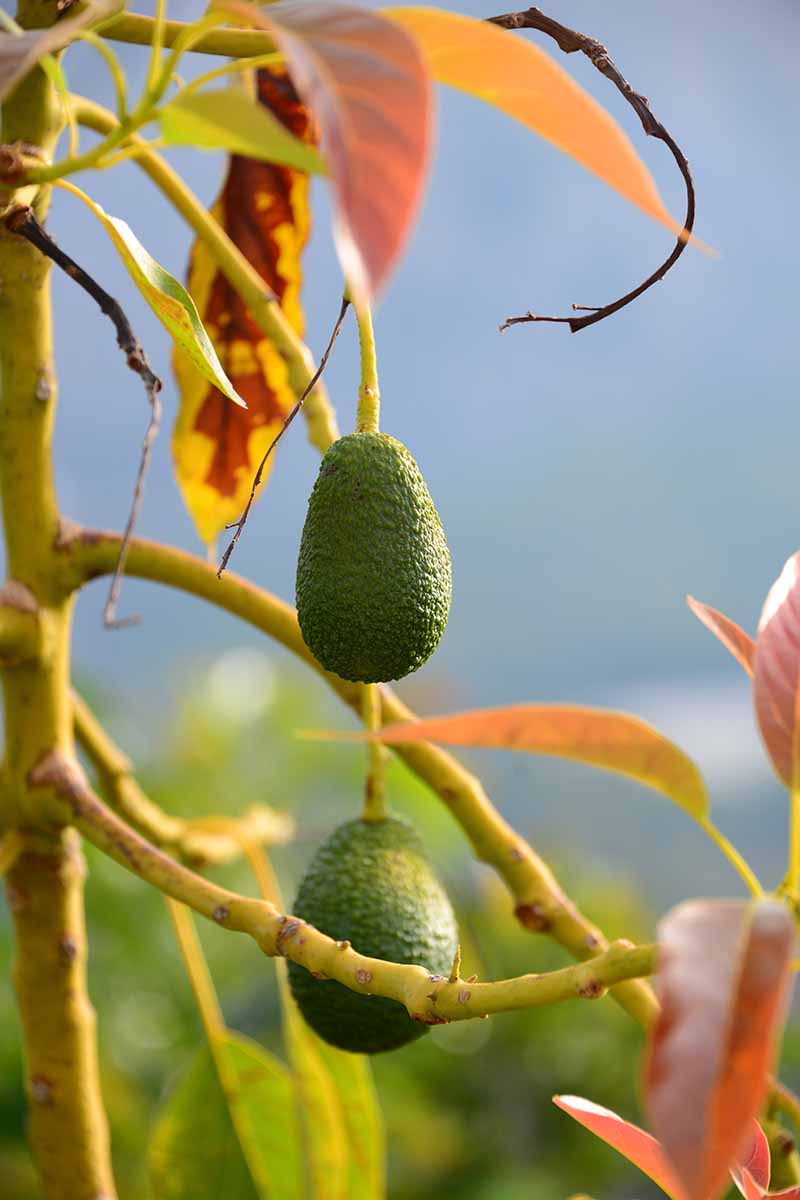
What if your avocado tree is not weathering the cold well? The first sign of freeze damage is when the tree drops its leaves. Here are some ways of dealing with frost damage.
Whitewash the Limbs
Compared to other types of fruit trees like citrus, avocado trees are particularly susceptible to damage from sunburn, which can occur when they lose a lot of their leaves.
To help protect the trees from sunburn, you should whitewash the limbs as soon as possible after the leaves drop with a white interior house paint diluted to 50 percent with water.
Prune Damaged Limbs
You will definitely want to prune back dead tissue to keep fungi from invading and causing damage. However, you should wait until new growth appears before you prune your tree.
As advised by Nick Saikovich and Ben Faber at the Division of Agriculture and Natural Resources for Ventura Country at the University of California, the amount of pruning required will depend on the degree of damage.
Cut Back on Irrigation
When your tree has lost a lot of leaves, it will lose much less water to evaporation than it normally does, and avocados are very sensitive to overwatering.
If you provide the same amount of water as before, you are likely to damage the roots and leave them susceptible to root rot. Water as if you were tending a much smaller tree. Irrigate less frequently with smaller quantities of water.
You Can Grow Your Avocado and Eat It, Too
The Mexican avocado cultivars offer hope for growers in cooler areas.
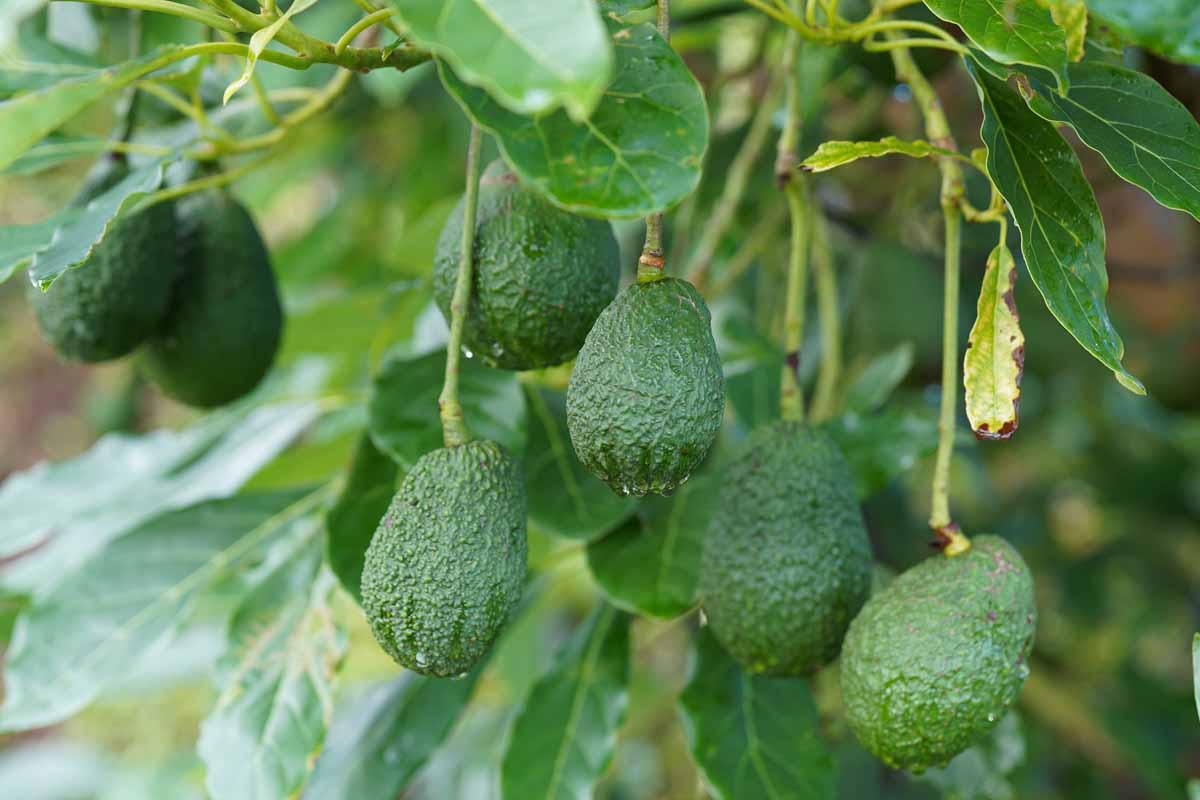
With varieties that can tolerate temperatures below 20°F, homeowners in areas that include parts of USDA Hardiness Zone 8 can enjoy the taste of fresh avocados from their own trees.
Have you tried any of these cultivars? If so, let us know where you live and share your experience with us in the comments.
What about other types of fruit trees for your garden? Get started with these guides:

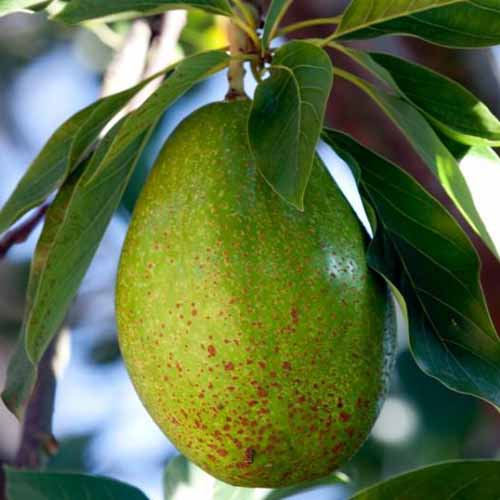
good useful info thank you. I want to buy trees that will give fruit soon in Houston
Hi Wayne,
I’m so glad that you found the article helpful! Joey, Lila, and Mexicana Grande are recommended for Texas. And the variety Pryor is originally from a tree in Del Rio. I think they would all be good choices for Houston.
I have read that many varieties produce “creamy” crops. A word that I’d surely like to see in the descriptions is “nutty”. I’m in New Orleans, so nutty varieties would have to tolerate our humidity. A variety that is not only nutty, but that also is buttery would be my version of a Holy Grail.
What ‘cha think, Dawlin’? … Happy Mardi Gras!
Avocado trees actually do best in warm climates with medium to high humidity. The classic ‘Haas’ is often described as nutty, as are ‘Pinkerton’ and ‘Sharwil.’ And one called ‘Sir Prize’ is actually described as nutty and buttery – maybe that’s your perfect fit!
Belated Mardi Gras greetings to you as well!
You will find plenty of Mexican avocado trees in Houston nurseries.
Thank you for all this information! I live in zone 6, Utah, and wondering if you know of success with cold hardy avocado trees with the use of a tree cover to protect against frost? Maybe with a light included in the blanket?
Thank you!
Hi Jana, I’m so glad that you found the article to be helpful. I don’t know of success growing avocados in zone 6, although I have read of people covering their avocado trees during frost and putting a light inside for warmth. I wish you the best in your efforts. Please let us know how they go!
Jana, I’m in Oklahoma and have 4 Fantastic variety avocado trees growing in containers at the moment, one has a few baby avocados on it. This variety is cold hardy down to 10-15 deg for short periods. Mine wintered well on my front porch. After they get planted in the ground here in a week, there’s tree blankets you can buy on Amazon to put over your trees and string incandescent Christmas lights through the branches under the blanket. Watch the Millennial Gardner on YouTube, he can explain it better…
Good luck and good gardening
hello! Thank yo for the wonderful tips! I live near zone 7 and 8 and I’ve already stared to grow an avocado tree from the pit. It’s almost ready to plant. Is it okay for me to plant it in my backyard, with plenty of sunlight? And Is it okay to use miraclegrow soil to plant it? Thank you!
Hi Natania, Thank you so much for your kind words! How exciting that the pit is ready to plant! I try to avoid Miracle Grow soil, because I like to have control over fertilizing. Some people advise against fertilizing really young avocado trees. I should mention that the tree may not produce the same kind of avocados as the fruit that the seed came from, since the trees are often grafted. It’s hard to estimate how well the tree would do in your backyard without knowing more about your climate. Does it frost intermittently, or is that common? If you… Read more »
Thank you for such great information! I’m looking to set up an avocado farm in Pakistan, Islamabad. I need some advice in where to buy the trees from that will bear fruit to sell. If you can please get in touch with me I would be so grateful for any tips. Thank you.
Hi Aida, I am delighted that you found the article helpful! It was definitely a labor of love to write. That is so exciting that you will be setting up an avocado farm! Strangely, they call them ranches in the states. I’m not sure about your climate. Are you looking to grow cold hardy varieties, or do you want to grow Hass or Fuerte? I have no experience in setting one up, but a friend of mine has an avocado farm and grows Hass avocados. I can call her to find out where she got her trees from. Also, there… Read more »
Hello, what an informative article! I am in zone 8a in Louisiana. What would you suggest as the best tree? I am very new to all of this. If there are organic, non-GMO options that is what I would prefer. Do you have suggestions on where I could order the trees from that you suggest for my growing zone?
Avocados grow best in Zones 9-11, but you should be able to get one to produce fruit in your zone as well, with plenty of attentive care! In your location, you may opt to plant one in a container to make it easier to protect during cold weather or bring indoors. ‘Haas’ is a nice pick – you can find more information about where to purchase this variety as well as additional growing tips in our guide. Keep in mind that seeds and plants produced using organic methods are not necessarily chemical free- this only indicates that they were produced… Read more »
Hi Heather, Allison is right that Haas is a great variety if you can grow it indoors over the winter. If that is not feasible, I wanted to suggest one of the pure Mexican cold hardy varieties. I’ve been told that Mexicola Grande is a good avocado that ripens evenly, and it is hardy to below 20 F. If you can, I would suggest planting it in a sheltered location. And this one is commercially available! There is a link in the article to an online nursery that carries it. I wish you the best with this new gardening endeavor.… Read more »
Hi Helga,
I leave in Torrance Ca. I have a fig tree which I started from cutting 25 years ago. This year some branches are having leaves curled on edges. What should I do to fix this issue?
Hi Scott, I’m sorry to hear about your fig tree. However, I am not an expert on figs. I would suggest that your post your question on the article on growing figs. They should be able to answer your question there. I would also suggest uploading a photo if at all possible. Here is the link to the article: https://gardenerspath.com/plants/fruit-trees/how-to-grow-fig-tree/
Nice article – well done.
Hi Chet, Thank you so much! That’s so kind of you to take the time to say. I enjoyed writing it.
Hi there,
I am thinking of commercially growing Avocados in the southern parts of ARMENIA. Which variety do you recommend? It does get to about 23 F and colder… Thanks
Hi Dareh, How exciting! Thank you for contacting us! To me, there are two questions – the cold tolerance and sources to buy the avocados. Mexicola Grande can tolerate temperatures down to 19°F and is supposed to ripen evenly. You can buy it online from a company called Brighter Blooms, but I don’t know if they would have the volume of trees that you would need. I know that there are avocado nurseries in Spain and Greece. If you do an advanced Google search with the words “avocado” “nursery” and “Spain,” you can pull them up. They might have cultivars… Read more »
The “May” avocado is identical to the “Joey” avocado, which I was able to confirm with Bill Schneider, who originally cultivated it, but no longer has that tree, and had mostly forgotten until I bothered him to recall “May”, which he named after a little girl, who came up and said, “Hi, my name is Mayella”, when he was in Uvalde to gather cuttings from the same renowned tree that “Joey” Ricers found there and propagated. You will find Joey trees. I have established a very modest Mexican avocado orchard in Yoakum, Texas, climate zone 9a, just a little south… Read more »
Hi John, Thank you so much for your comments with their invaluable information! I had no idea that May and Joey are the same type of avocado! Your inability to reach Bill Schneider is worrisome. The phone number for Devine Avocados is no longer in service. I even called the Devine Chamber of Commerce to ask if they knew if the nursery is still in business. The gentleman I spoke to was very nice, but he didn’t know the status of the nursery. That is exciting that you have a Mexican avocado orchard! I’ve been told that some of the… Read more »
Hi Helga, My wife, Jenny, showed me this article, which looked very familiar, especially as I scrolled down to the comments. I am sorry to say that since the February 2021 deep-freeze in Texas that the climate zones are not what they were before, as climate zone 9a should never get below 20F, by definition, and now that happens every single winter, once per winter, and only once. Zone 8 should get to 10-20F and zone 7, 0-10F. Again, we have gotten one per winter climate-zone 7-8 freeze in climate zone 9a every winter since February 2021 without fail. I… Read more »
I have a nice del rio / Pryor avocado. It has fruit that do not turn black. I struggle with when the fruit are mature for harvest. I’m in the central valley of CA. Any tips or links are appreciated.
Hi Gary,
I’m glad your tree is doing well. Thank you for your question!
Unfortunately, I don’t have an answer for you. Craig Hepworth, the Florida fruit geek, wrote about how to tell when the green-skinned Mexican avocado varieties are ripe and said that it can be “a bit of a guessing game.”
There don’t seem to be any good tips out there unless one of the experts writes in with one. Here is a link to the article in which he discusses the ripening and harvest of Mexican avocados. I’m sorry I couldn’t be of more help.